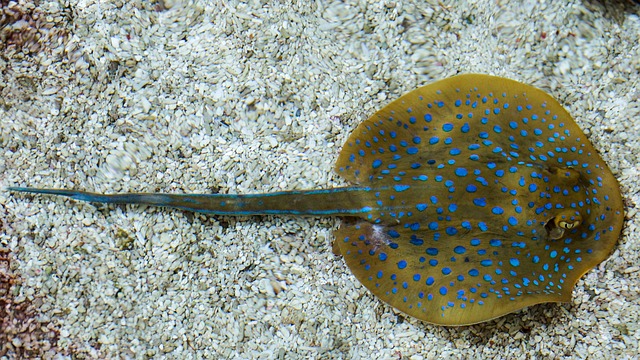Scientists have built a creature that won’t be found anywhere in nature – a tiny, artificial stingray from layers of rat heart cells covering a gold skeleton, the Los Angeles Time reports.
The swimming critters are expected to offer some insight into building soft robotics, studying the human heart and down the road, maybe even building an artificial heart.
Kit Parker, senior author on the project and a Harvard bioengineer, said he first got the idea of making these ray-bots when his daughter tried to grasp a stingray at an aquarium, which quickly evaded her hand. Parker saw the similarities between the ray’s rippling body and the cord-like trabeculated muscle on the human heart’s surface, and was struck by the brilliant notion that he could build something like that.
Parker said, “It kinda hit me like a thunderbolt. All the dots connected.”
This wasn’t just some form of entertainment; Parker wanted to understand how the heart works, which is a muscle that pumps to push liquid around inside the human body. The stingray or the skate, which have soft bodies, move by using a wave-like motion, which is similar to what the heart does, except that the water creatures are acting on liquid outside their bodies.
Parker explained that all marine life forms, except crustaceans, are essentially muscular pumps. He realized that the ray could become a useful physical model.
The idea has a following among researchers, such as MacArthur grant recipient John Dabiri at Stanford University, who studies jellyfish because of what its motions may say about the human heart. Parker had previously teamed up with Dabiri to create a synthetic jellyfish using rat heart cells, which then easily darted around a tank, although it had no direction.
For this new study, Parker and his team took rat heart cells and genetically engineered them to react to light. They then put the layer of rat cells together with silicon layers and a small skeleton made of gold.
Gold is easier to sputter onto silicone rubber, and is less likely to damage living cells.
The cells, layered on the bottom of the ray-bot, would weigh it down. To mimic the stingray’s motion, the scientists needed something to pull it up, which would theoretically mean a second layer of cells on top. The problem was that synchronizing the layers to contract in rhythm was a complex process.
The scientists then decided to rely on the flexibility of the gold and silicone structure, which responds to downward motion by recoiling upwards. This solved the problem with a simple, mechanical movement – though designing the structure with the correct amount of recoil and create the forward thrust movement was difficult, Parker said.
The result of all this was a tiny, soft stingray robot the size of a penny, which can fit in the palm of a human hand. Weighing about 10.18 mg, the synthetic ray has about 200,000 live heart cells in its 16.3mm body.
When the scientists tested their creation by placing it in a salt solution and shining a blue light on it, the heart cells would contract and the bot would swim forward. The ray could also turn right or left, depending on where the blue light was shown.
Parker said that he and the other scientists are already learning from the experiment and are applying them to other research on the human heart. He believe the information from the bot can be used to make optical pacemakers, instead of electric ones, and is excited about what science has taught him regarding muscle-pumping techniques. He has “organs on chip” that he might apply what he’s learned on.
For now, Parker said they’re done building synthetic ray-bots. “This project has served its purpose. We learned what we came to learn.” But he says this experiment might be useful in robotics, particularly for those who want to build efficient, graceful robots that mimic humans.
Scientists have made all kinds of robots inspired by all kinds of animals. But making soft robots that can be directed accurately has proven to be a challenge for many. This study could help with those, Parker said. “This is a transdisciplinary project. And in that way it’s kind of like a piece of art — in that depending on what lens you view this work in, you might see something differently.”
The research has been published in the journal Science.
























